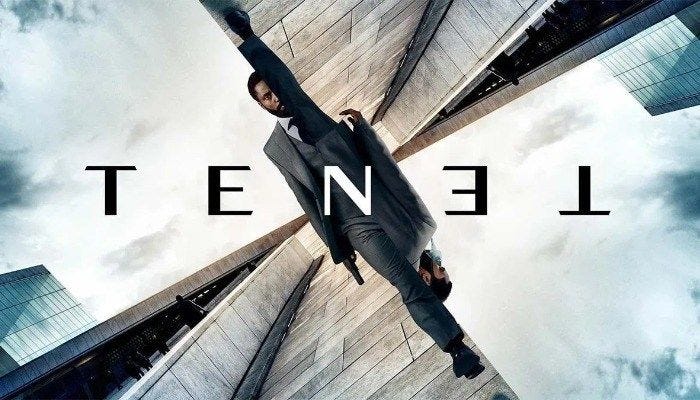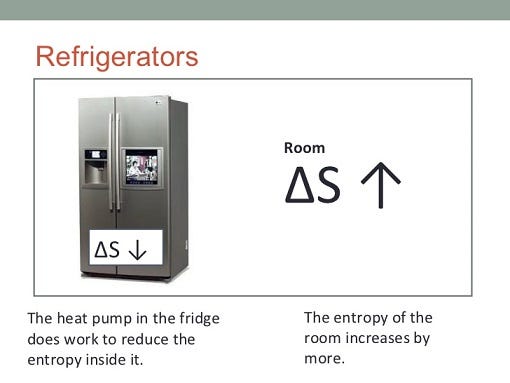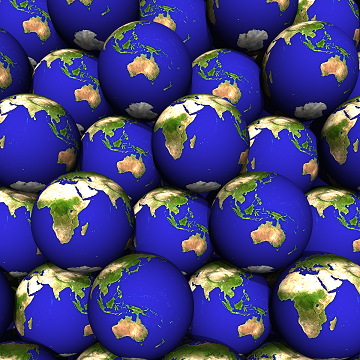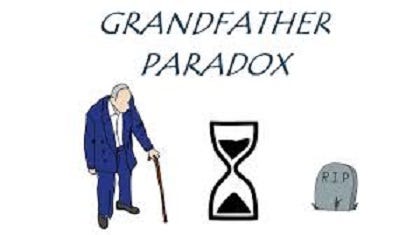
Despite all the nitpicking which will follow, there’s absolutely no reason why Christopher Nolan’s scientific name droppings and speculations (in his film Tenet) should be scientifically accurate in every respect. (It can even be argued that they needn’t be accurate at all.) Indeed, Nolan has himself said that he took various liberties in Tenet. (See his later reference to Kip Thorne.)
But what else would anyone expect?
Tenet is a work of art/entertainment, not a piece of scientific research.
So there are many scientific problems with — as well as questions about — Tenet. However, to grind through each one of them would be to verge on both scientific and aesthetic pedantry. And that’s why only the main scientific themes of this film have been tackled in this piece. Namely: entropy, time travel (specifically, the Grandfather paradox) and “parallel worlds”.
************************************
Tenet is a new spy film. It’s directed and written by Christopher Nolan, who previously directed The Dark Knight Trilogy (2005–2012), Dunkirk, etc. More relevantly to the theme of the science in science fiction, Nolan also directed the sci-fi movies Inception and Interstellar.
Nolan took more than five years to write the screenplay for Tenet. Not only that: he worked on some suggestions from the theoretical physicist Kip Thorne. (Kip Thorne had previously offered advice on Nolan’s film Interstellar.) More relevantly, Thorne (in his Black Holes & Time Warps) wrote about going down a wormhole in which
“within a fraction of your second of your own time you will arrive on Earth, in the era of your youth 4 billion years ago”.
Christopher Nolan himself has said that
“Kip Thorne read the script and he helped me out with some of the concepts, though we’re not going to make any case for this being scientifically accurate”.
Amateur Film Review

The basic gist of Tenet is that a secret agent called the Protagonist (played by John David Washington) manipulates time (via time travel or “inverted entropy”) to prevent a global catastrophe.
In terms of film criticism, I must disagree with the critic who wrote the following:
“A visually dazzling puzzle for film lovers to unlock, Tenet serves up all the cerebral spectacle audiences expect from a Christopher Nolan production.”
I don’t believe that Tenet is particularly “cerebral”. Apart from the science arguably being weak or at least exaggerated (if that matters at all in a Hollywood film), multiple things happening at once doesn’t necessarily mean that something is cerebral. And I don’t agree with film critic James Berardinelli either when he wrote that Tenet
“may be the most challenging of Nolan’s films to date when it comes to wrapping one’s mind around the concepts forming the narrative’s foundation: backwards-moving entropy, non-linear thinking, temporal paradoxes”.
Although we have a host of technical terms from physics (specifically, the more popular sexy ones) in Tenet, none of these is developed in any way. (There is no strong — aesthetic — reason why they should be developed.) Robert Pattinson’s character, Neil (the Protagonist’s “handler”), for example, mentions the positron. He then mentions Richard Feynman on the backwards time travel of the positron. This is a reference to Feynman’s interpretation — repeat, interpretation (see here) — that the positron as an electron moving backward in time. To state the obvious, there’s a huge leap from this interpretation of a positron (as a electron moving backward in time) to bullets - let alone human beings - moving backward in time. For a start, we’ve moved from the “quantum scale” to the “classical scale”. Having said that, there’s much dispute in science and philosophy as to whether there is such a neat and clean “line in the sand” (an image from the physicist and science writer Brian Greene) between the quantum and classical realms.
Some Scientific Parts of the Plot
 |
| Andrei Sator, the Russian oligarch (played by Kenneth Branagh). |
In terms of the plot, the Protagonist is led toward a secrete organisation called Tenet. (The word “tenet” itself can be inverted.) In that organisation a scientist called Laura is studying bullets whose entropy has been “inverted”. Such inversion enables bullets to move backward through time. And, of course, it turns out that people can be temporally inverted too.
The plot is thickened by the fact that these counter-entropic bullets have been used by a Russian oligarch by the name of Andrei Sator (played by Kenneth Branagh). And Sator is himself communicating with future persons.
Technically, these inversions are carried out by a machine called a “Turnstile” (which is like an up-to-date version of H.G. Well’s “time machine” or Doctor Who’s TARDIS). The Turnstile itself was created in the future.
In terms of detail, various inverted devices (other than bullets) are said to be the products of a “algorithm” which was also developed in the future. That algorithm is capable of inverting the entire world. Indeed future humans are using Sator — knowing that he’s “mad” enough to do it — to activate it.
Entropy and the Science of Time Travel

Time travel is certainly seen as a possibility by many scientists. Albert Einstein, for example, was keen on this debate and offered his own ideas on the possibility. He even showed us how he believed it could be done. And, many times, Stephen Hawking too entered the arena of time travel.
Despite all that, many other scientists reject time travel. Some of their rejections are purely logical/philosophical. Others are purely scientific. Yet more are both scientific and philosophical/logical.
In terms of possibility, we also have such cases as wormholes (as Kip Thorne mentioned), Kurt Gödel’s rotating universe, black holes, etc.
As for entropy.
At first it will be hard for the average viewer to to see the precise connection between entropy and time travel in the film Tenet. One may understand entropy fairly well. One may also understand time travel fairly well. However, exactly how are these two things tied together in Tenet?
One important point to get out of the way is that in physics all physical processes (or events) are deemed to be time symmetrical. That is, if one plays the film back of a physical event, then such a occurrence would be physically possible. What’s more, the viewer wouldn’t be able to spot the difference between something being played back and something being played forward. However, this is true only of processes (or events) in the quantum realm, not the “classical” realm. In other words, the processes or events involving subatomic particles, their interactions, etc. within a specific experiment (or within a given sample space) can be reversed. However, if a football match were to be reversed, then things would be very different. That is, although a viewer would quickly note the time reversal of a football match, and if that reversed match were real, it still wouldn’t go against any of the laws of physics.
To get back to entropy.
Of course it can be said that the “inversion” of entropy is very different to backward or forward time travel (despite the fact that they’re tightly connected in Tenet). More specifically, rather than increased entropy occurring within the universe, the opposite can occur in any given system. That is, system S can become more ordered over time. But this isn’t so surprising. Many systems become more ordered over time despite the overall entropy of the universe.
This means that entropy applies to the universe as a whole, though not to, say, a bullet (one of the first examples in Tenet).
Of course the fridge is the best-known example of what’s sometimes called “reverse entropy” (“negative entropy”). And when the fridge first became generally available, it even sparked the interest of Albert Einstein. (He applied for a patent.) However, there are no conclusive reasons (as yet) to believe that this is also a question of the the reversal (or inversion) of time.
The problem (or simple fact) is that although a fridge does reverse entropy, it only does so in a “local” and insulted environment (i.e., within an enclosed system). In other words, a refrigerator alone — and even every fridge on the planet — can’t reverse the entropy of the universe. And neither does a single fridge - even in its own local space — make time run backwards.
On a more technical “microscale” than a fridge, scientists have used a strong magnetic field to make the nuclei in hydrogen particles of chloroform get hotter, while their colder carbon partners get colder (see here).
Yet here again there is no reversal of time. (This, of course, depends on what time is taken to be.)
So how does inverting entropy automatically entail going backward in time? And why should all this apply to both going backward in time and going forward in time?
Parallel Worlds

Logically (rather than scientifically) one can conceive of parallel worlds (since such a thing is mentioned in Tenet) in which entropy decreases rather than increases. The important word here is “conceive”. This hints at the fact that this is a philosophical/logical scenario rather than a scientific one (though some/many scientists may disagree). Not only that: since possible worlds (at least in philosophy) are primarily about what’s often called logical possibility (rather than scientific/empirical possibility), this further problematises this issue.
The Tenet character Neil also mentions “parallel worlds”. Here it’s worth making an important distinction (for the layperson) between other dimensions and parallel worlds (or Hugh Everett’s many worlds). Other dimensions are dimensions of our universe. (This is a fundamental part of string theory.) Parallel worlds, on the other hand, may be completely separate from our word. That is, can there really be “causal contact” between parallel worlds and our world? This must surely mean that the only possibility that Tenet can have in mind is parallel dimensions, not parallel worlds. Indeed when it comes to parallel worlds, it’s hard to make sense of the word “parallel” at all. These worlds simply can’t be parallel to our world. (Of course perhaps no one is expected to take the word “parallel” literally.)
And just as a distinction has just been made between parallel dimensions and parallel worlds, so a distinction can also be made between the many worlds (of many-worlds theory) and the other “universes” of a multiverse. In many-worlds theory, the possibility of causal — or other kinds of — contact between our world and other worlds is accepted — at least by some scientists. (See also brane cosmology.) However, when it comes to our universe and other universes (or a “bubble universe”) in a multiverse, that isn’t usually accepted by scientists (although there is some talk of “colliding” universes).
The Grandfather Paradox

One of the main characters in Tenet mentions the Grandfather paradox. This has it (in basic terms) that a person goes backward in time to kill his own grandfather. Yet this act seemingly makes it impossible for him to do such a thing in the first place. That’s because, were he to be successful, then he wouldn’t exist. In other words, it would never have been possible for him to go back and kill his own grandfather had his grandfather already been killed (i.e., by this person as a time-traveler).
The Protagonist asks which paradoxical possibility is true when it comes to the Grandfather paradox. Neil (the Protagonist’s handler) answers by saying that none is true because “that’s the nature of paradoxes”. This seems like a cheap and easy way to bypass the philosophical — and, perhaps more relevantly, scientific — problems with this aspect of time travel.
In Tenet, however, we have much more than mere backward or even forward time travel. We also have all these things happening at the same “time”. Not only that: the same person exists at the same time as… well, two people. So Tenet presents us with multiple juxtapositions of time travel. Take these:
1) Moving from (our) present to the future.
2) Moving from (our) present to the past.
3) Moving from the future to (our) present.
4) Moving from the future to (our) past.
5) Moving from the past to (our) present.
6) Moving from the past to (our) future.
And no doubt I’ve left some options out here.
Thus the Protagonist — as he exists in the present — is in the same scene (or time) as the Protagonist as someone who’s traveled back to the present from the future. However, since all time must be relative in this film, it must be difficult for the viewer — and the world itself - to tell what is the present.
One other example (of many) in which the same person exists as two people in the same scene is when Sator (the Russian oligarch) arrives at a location only to see his inversion (i.e., himself) leaving that very same location.
One final example of different types of time travel occurring at the same “time” occurs when troops carry out a “temporal pincer movement” in which one set of troops moves forward in time and another set moves backward in time. It’s difficult, however, to understand both what this means and how it’s possible. In terms of the visuals of Tenet itself, this is simply backward and forward movement in the same visual scene. Yet in this sci-fi scenario we’re supposed to have backward and forward time-travelling occurring in the same place and at the same “time” — at least as it’s presented to the viewer. Thus, in that case, wouldn’t we have three spacetimes at the same… well, time? That is, in the present time and place we’d have one set of troops moving backward in time and another set of troops moving forward in time. In addition, all this would be occurring in the same phenomenological (as it were) “timeless present” (i.e., from the point of view of the viewer).
It can be supposed that we could have different things happening in different spacetime slices of the same overall spacetime totality. That is, within spacetime area A, we’d also have spacetime area x and spacetime area y. (Having put that possibility, I doubt that this was the conscious intention of the Christopher Nolan or of anyone else.)
Ironically, despite all these attempts to change the past, the character Neil says (more than once) that “what happened, happened”. This seems to be a hint (or a plain statement) that the past simply can’t be changed..
Of course one solution to all this is not to argue that the past can be changed or that it can’t be changed. Instead, event x happened in the past and a time traveler goes back to just before event x in order to stop it from happening in the first place. However, when he does stop it from happening, what actually happens is that event x still happens in our world; though it doesn’t happen in a “parallel world”… But what’s the point of that? This still means that event x occurred in our world. And, as many philosophers and scientists have said, what do these other worlds have to do with us?







No comments:
Post a Comment